• Military trainer • Aerobatic • Liaison aircraft
First flown in 1986. the Mi-34 was designed as a replacement for the Mi-1 and Mi-2 helicopter trainers. It was also offered for the observation, liaison and border patrol roles. The Mi-34 can carry a maximum payload of 165 kilogrammos (360 lb.) of fuel over a distance of 160 kilometres (100 miles) and it fuel consumption is a modest 45 litres (12 gallons) per hour. A twin-engine version, flown for the first time iin 1993. has two VAZ-430 twin-chamber rotary engines.
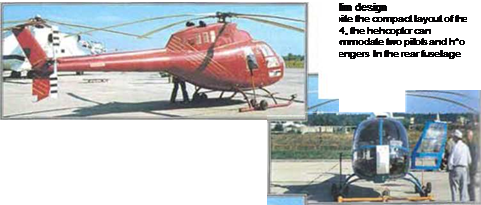
A Pilot trainer

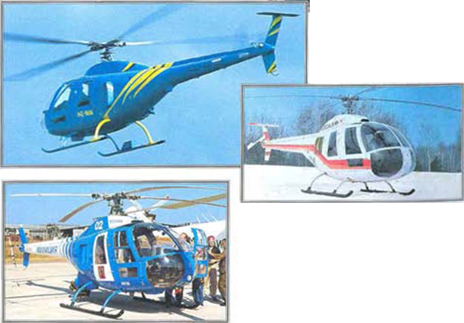 A military training variant has undergone flight testing with the Soviot armed forces as a possible replacement for the Mi – UMi-2.
A military training variant has undergone flight testing with the Soviot armed forces as a possible replacement for the Mi – UMi-2.
◄ Flight performance
One of the latest helicopters developed in Russia, the •Hermit’ is sparsely equipped compared to its Western counterparts.
FACTS AND
>- Tho Mi-34 ‘Hermit’ was designed as a replacement Гог tho Mi-l/Mi-2 civil light helicopter and military trainor.
► ‘Hermit’ is tho first Soviet holicopter capable of executing a loop.
► Composite materials are used for the main rotor and tail blades.
FIGURES
> Mil first flow the Mi-34 ‘Hermit’
in 1986, using unboosted mechanical Right controls.
> A twin-engine version is built by the VAZ mole*
car works at Togliatigrad.
> The Mi-34VAZ features a totally now rotor head made from carbon fibre.
|
|
 |
|
Mi-34 ‘Hermit’
Type: фМ nWitary tramerfliaeon helicopter
Powerplant: one 242.5-kW (325-hp.) VMKB M – 14V-28 nine-cy^nder шг-cooled radial eng. ne
Maximum speed: ?10 krrvh (130 m p h)
Cruising speed: 180 km/h <112 m p h Range: :50 km (280 mi.)
Hover ceiling: 1500 m (4.920 ft.)
Weight: Normal take-off 1080 kg (2.380 1Ы Accommodation: :«vo pitots and two passengers Dimensions:
Span 10 m <39 ft 7 in.)
Length 11.4m (37 ft. 5 in,)
Height 2.8 m (9 tt. 2 in)
Main rotor area 78.54 m’ (845 *q tt.)
|
|
|
Left: After years of building military helicopters, the Ш design team is shifting its focus to the civilian helicopter market with the Mi-34
|
|
|
The twin engine Mi-.WAZ b built by the / automobile factory It lets a new rotor head fot enlunoeil control response, along with ііпрпл ed range, enilur. true and performance
|
|
|
Above: The Mt-34 haas stunned airshow audiences with its flight demonstrations. An example is seen here about to enter a loop.
|
|
|
|
|
latter 4«r»ons of the ‘hermit’ have two engnes ana ode» ncreased rarvjs and speed.
|
|
|
Th# Herml’ rue а емг щиО than ns Wruarn eouvatants marty boccause 0* >s rewtrvery poor quatty «ngino For «Пае» speed АіЧомміїаі»-» Gari-ln is in# lastost hotcootcv in its cbm
|
|
|
Compoorte structures are used mrouyou! the hbteoptor. particularly m the man and ini rotor sections This has ‘ixii/ced the Overat weight and трглей the safety ot the design Future MJ products wfl use more ccmxste ccmpcrees.
|
|
|
Seating * crovdod lor two ptktta. ttw mar of Ifw oockpt o devoted to cargo <* ми ■» xioonai two passengers Ftajht conlrob am inboontod mechaivcai ctrKrots imuring heavy nputs from the w*ot during си» turn manoeuvre*
|
|
 |
|
|
|
|
|
|
|
|
|
|
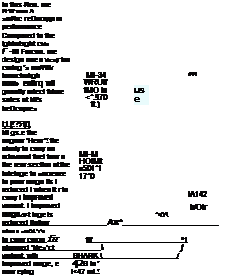 |
|
|
 |
|
AH ci/rent production Hermts’ have landing ste». attnough I he* design can bo equipped with wheels і needed
|
|
|
|
|
■ Mi-6 HOOK’: Fust of the heavywe-ght hehcopters m service, the Hoc*’ first tew in 1857 and remains *t front-line service.
|
|
|
■ Mt-17 •HIP’: Developed from me earl** Mt-8 in an effort to offrn improved performance, the МИ 7 паз seen widespread civtkm service.
|
|
|
■ M.-2 HOPLfTE’: Despite its smal sms. Use ГГ8*’ ‘..чва for a variety of duties, nckjdng
DO®» CBtmfe
|
|
|
■ Mi-35 ‘HIND-F: Used as a battlefield attack helicopter, the ‘Hind’ has boon constantly —I has seen constdorabk) combat.
|
|
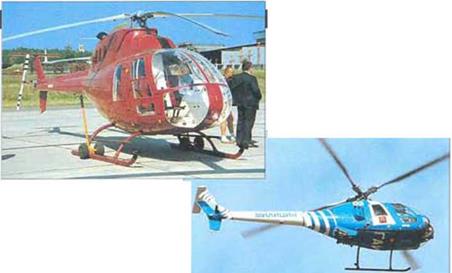



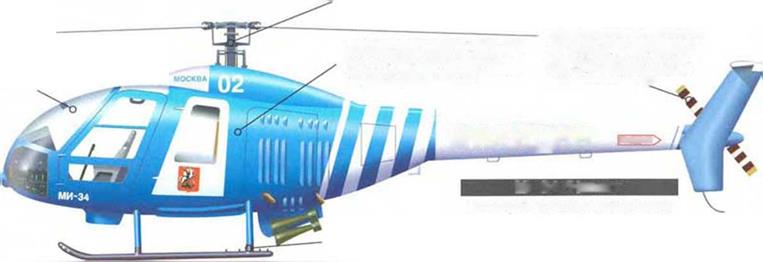
NH Industries


 A military training variant has undergone flight testing with the Soviot armed forces as a possible replacement for the Mi – UMi-2.
A military training variant has undergone flight testing with the Soviot armed forces as a possible replacement for the Mi – UMi-2.



















